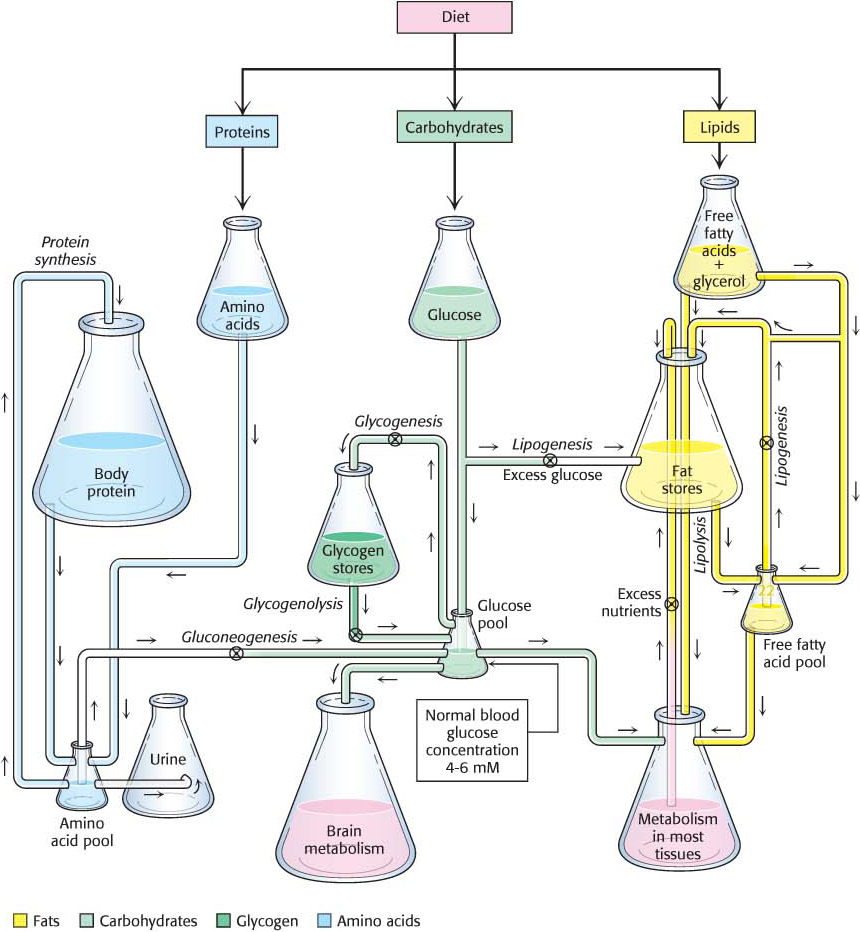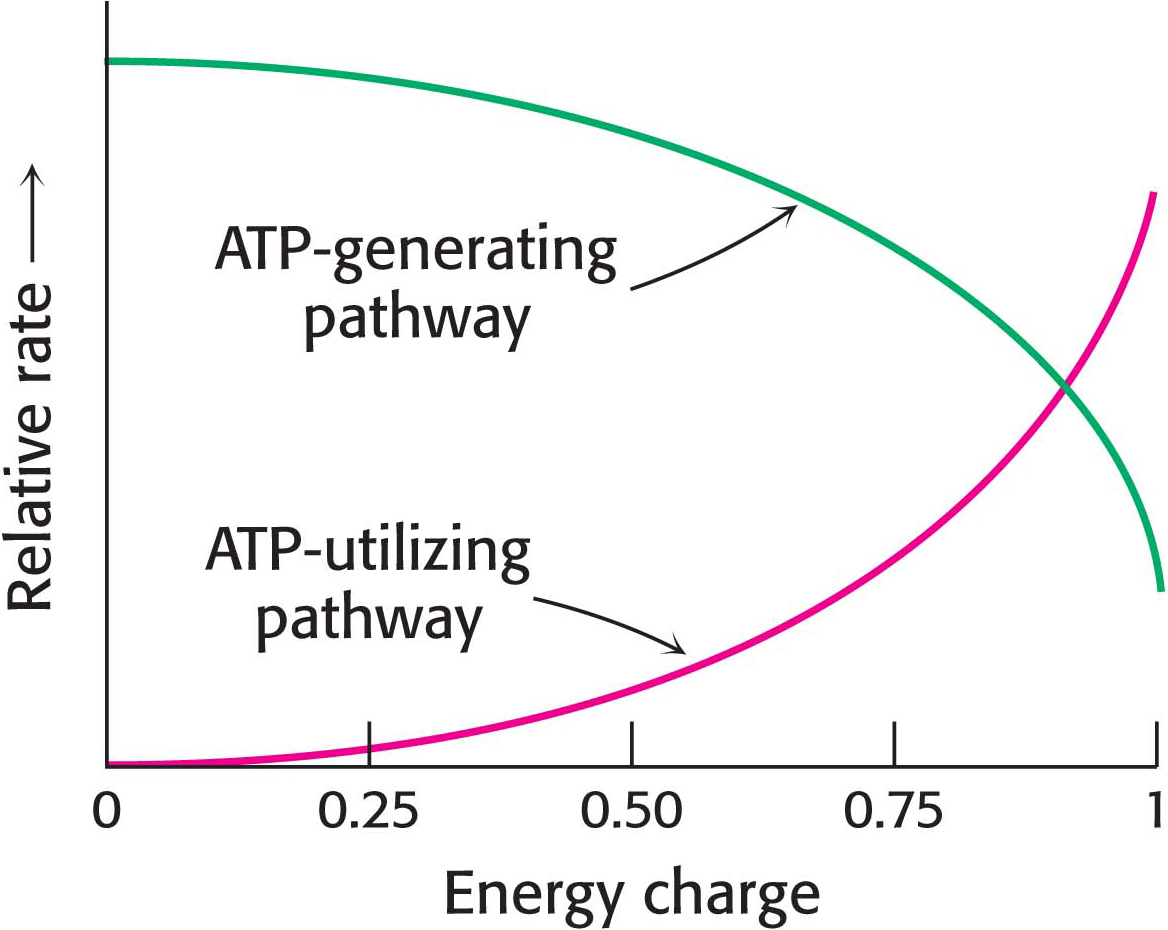
15.6 Metabolic Processes Are Regulated in Three Principal Ways
It is evident that the complex network of metabolic reactions must be rigorously regulated. The levels of available nutrients must be monitored and the activity of metabolic pathways must be altered and integrated to create homeostasis, a stable biochemical environment. At the same time, metabolic control must be flexible, able to adjust metabolic activity to the changing external and internal environments of cells. Figure 15.20 illustrates the nutrient pools and their connections that must be monitored and regulated. Metabolism is regulated through control of (1) the amounts of enzymes, (2) their catalytic activities, and (3) the accessibility of substrates.

The Amounts of Enzymes Are Controlled
The amount of a particular enzyme depends on both its rate of synthesis and its rate of degradation. The level of many enzymes is adjusted primarily by a change in the rate of transcription of the genes encoding them (Section 15). In E. coli, for example, the presence of lactose induces within minutes a more than 50-
Catalytic Activity Is Regulated
The catalytic activity of enzymes is controlled in several ways. Allosteric control is especially important. For example, the first reaction in many biosynthetic pathways is allosterically inhibited by the ultimate product of the pathway, an example of feedback inhibition. This type of control can be almost instantaneous. Another recurring mechanism is the activation and deactivation of enzymes by reversible covalent modification. Reversible modification is often the end point of the signal-
Hormones coordinate metabolic relations between different tissues, often by regulating the reversible modification of key enzymes. For instance, the hormone epinephrine triggers a signal-
Many reactions in metabolism are controlled by the energy status of the cell. One index of the energy status is the energy charge, which is the fraction of all of the adenine nucleotide molecules in the form of ATP plus half the fraction of adenine nucleotides in the form of ADP, given that ATP contains two phosphoanhydride linkages, whereas ADP contains one. Hence, the energy charge is defined as


The energy charge can have a value ranging from 0 (all AMP) to 1 (all ATP). A high-
An alternative index of the energy status is the phosphorylation potential, which is directly related to the free-

The phosphorylation potential, in contrast with the energy charge, depends on the concentration of inorganic orthophosphate (Pi).
The Accessibility of Substrates Is Regulated
Controlling the availability of substrates is another means of regulating metabolism in all organisms. For instance, glucose breakdown can take place in many cells only if insulin is present to promote the entry of glucose into the cell. In eukaryotes, metabolic regulation and flexibility are enhanced by compartmentalization. The transfer of substrates from one compartment of a cell to another can serve as a control point. For example, fatty acid oxidation takes place in mitochondria, whereas fatty acid synthesis takes place in the cytoplasm. Compartmentalization segregates opposed reactions.